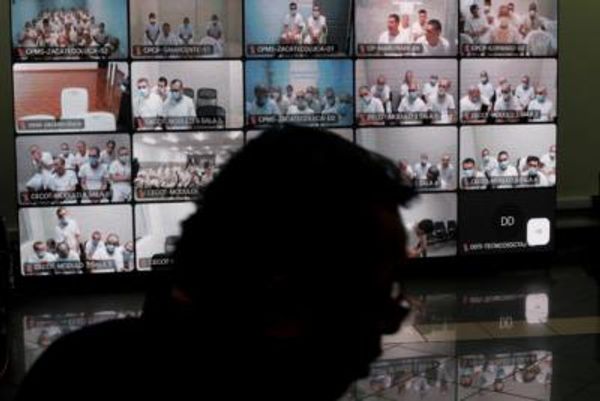
Henry Sanderson has written a remarkably hopeful and useful book. My guess is that was not his original plan. The longtime commodities and mining reporter for the Financial Times, Sanderson may well have sold this book on the idea that “going green” was actually taking us in dark directions. And indeed his in-depth reporting – stronger on corporate histories than on-the-ground interviewing – shows the corruption that underlies many of the mining schemes for the minerals used in batteries, the human rights abuses and environmental troubles that can come from that mining and the geopolitical complications that emerge when countries such as China and Russia control crucial parts of the trade.
These defects are fairly well known at this point: the underside of, say, “artisanal” Congolese cobalt mining has been widely reported and the Ukraine war, which happened too recently to be reflected in Sanderson’s account, has underlined Moscow’s control of some critical materials, such as nickel. Indeed, understanding of these kinds of threats has penetrated deeply enough that it’s become a favourite trope of the fossil-fuel industry; I was debating recently with a former Republican congressman who was indignant about African child labour in the mineral supply chain.
To be clear (which Sanderson is really not), even if the worst abuses were 10 times more frequent than alleged, they would not come close to matching the damage from fossil fuels that batteries, solar panels and wind turbines could replace. The most recent study, for instance, shows that 8.7 million people a year, most of them poor, die from breathing the particulates and other combustion byproducts of coal, oil and gas – that’s one death in five on this planet, more than HIV/Aids, malaria, tuberculosis, war and terrorism combined.
And that’s before one calculates the pain from the climate change these same fuels are now causing – the toll from floods, fires, droughts, disease and displacement. The UN estimates that climate change could cause a billion refugees by mid-century, so, if we had to make a devil’s bargain to unlock the power of cleaner energy, any utilitarian would do so.
But the relatively happy implication of Sanderson’s reporting is that we may not have to make that deal. When he looks at the cobalt mining situation in the Democratic Republic of the Congo, for instance, he finds that child labour and hand-mining seem to have peaked some years ago; under pressure from NGOs such as Amnesty International, car companies tried to flush “blood cobalt” from their supply chains, either by finding new sources in Morocco or Australia or by buying from big industrial suppliers such as Glencore, whose mines were more regulated. This is far from an ideal solution – Sanderson adduces plenty of evidence demonstrating corruption and avarice in that industrial supply chain – but it is also almost certainly not as bad as the toll that the oil industry has taken on poor nations around the world. (Doubters should read Steve Coll’s magisterial history of Exxon, Private Empire, which is also a masterclass in corporate reporting.)
Sanderson also finds, in case after case, that one response to corruption, abuses and shortages of materials is new engineering that finds a different way to the same end. He points out, for instance, that carmakers have started building cobalt-free batteries, relying instead on lithium phosphate; many Tesla models now come with the new technology. The lithium supply chain is currently dominated by China too, but as Sanderson notes, big new facilities in places such as California’s Salton Sea are finding ways to use low-carbon geothermal energy to distil the mineral from toxic brine. (Apparently, this technology is also possible in Cornwall.)
All of these developments are, in a sense, predictable. As a massive and recent Oxford study of learning curves makes clear, the price of renewables has come inexorably down over the years because, as much as minerals, they depend on intelligence. A few years ago, for instance, journalists wrote anguished dispatches about the fear that balsa wood shortages would stop the production of wind turbine blades; manufacturers instead turned to synthetic foams and prices kept falling. One imagines that current spikes in the price of fossil fuels will simply drive more innovation.
And in the end the world will be far the better for it, for reasons of simple physics. You indeed do have to mine to produce the minerals for a clean-energy world. But you don’t have to do it anywhere near as much as in a fossil-fuel world. Having mined the rare earth minerals or cobalt or lithium for a solar panel, you place that panel in a field where, for the next quarter century, the sun delivers the energy as it rises above the horizon. (And Sanderson makes clear that, at the end of that period, recycling the ingredients in clean tech is both possible and profitable.) You don’t burn up the solar panel to generate energy, requiring you to build another – that’s what you do with coal. The Stanford professor Mark Jacobson estimates that in a clean energy world the total mining burden would drop 80%; an easy way to understand this dematerialisation is to remind yourself that fully 40% of ship traffic on our planet at present is simply shipping coal, oil and gas eternally back and forth.
Sanderson ends with some very good pieces of advice: drive much smaller cars, if we need cars at all, prioritising battery production for trucks that are in much more constant use. And use less stuff in general, particularly in order to avoid “deflecting consequences and risks into ecosystems and on to people with less power – and thus less influence over global affairs”. He’s absolutely right: clean energy can’t be a licence for yet more growth in luxury consumption.
The climate crisis leaves us no choice but to build a new world and as Sanderson makes clear, we are capable of making it a better one than the dirty and dangerous planet we’ve come to take for granted.
• Bill McKibben is an author, educator, environmentalist and founder of 350.org and Third Act
Volt Rush: The Winners and Losers in the Race to Go Green by Henry Sanderson is published by Oneworld (£20). To support the Guardian and Observer order your copy at guardianbookshop.com. Delivery charges may apply







